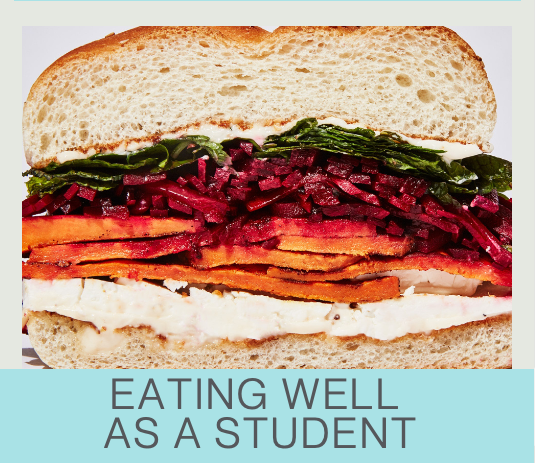Food Secure Canada considers community engagement a critical ingredient in its “Recipe for a Better Food System.” Involving students in the process of change has been at the core of our research work. Here is what we’ve done:
In pre-pandemic times, I worked with groups of students to radically use campus space and co-create another way of doing lunch on campus. I launched a pilot project with GBC Student Affairs to experiment with a simple lunch framework. The framework provided space for students to develop and enact their food knowledge and connect with each other over a slow, healthy meal in the middle of their busy days. We broke down a recipe into affordable parts, and each student brought an ingredient to contribute to a grain bowl. Then we met on campus, wiped down a food court table, set it with a tablecloth, tealights, cutlery, and compostable bowls and sat down to a delicious meal.
The experience of eating with strangers in this way was a unique experience because suddenly we were no longer strangers; we found ourselves telling each other stories, giving advice, and sharing cooking tips! One student commented that as strange as it sounded, it felt like a family meal. This and other comments at these lunches revealed that a shared meal can have a truly positive impact on a student’s state of mind and that engagement in food-making activities is a necessary ingredient of a reimagined campus food culture.
The pandemic, of course, created a new challenge for students and campus administrators who were trying to support students: now they needed to address student food insecurity and student well-being remotely.
Below is the recipe for a virtual cook-along program we developed after pivoting to online programming due to the COVID-19 pandemic.
Our Tried and True Virtual Cook-Along Programming Recipe
Ingredients:
- Strategic partnerships with campus stakeholders
- Partnerships with local food suppliers
- Food box distribution logistics and event coordination
- A core team dedicated to delivering this programming
- Engaged students on each partner campus
Preparation:
1. First, we established strategic partnerships with residence coordinators at three college campuses: George Brown College (GBC), Humber College, and Seneca College, and with student unions at Dalhousie University, Lakehead University, and the University of Regina, as well as the Student Life administration at GBC.
2. We also established partnerships with the following local food suppliers who provided the local food boxes: The Wolfville Farmers’ Market, The DSU Farmers’ Market, Superior Seasons, REACH Regina, and 100km Foods.
3. The campus partners paid for and distributed the local food boxes to students on their campuses.
4. Each week, students joined Chef Joshna Maharaj on a Zoom call from her kitchen and learned about who grew the ingredients in their local food boxes and then were guided to cook delicious, nutritious meals with those ingredients in virtual and hybrid Cook-Along events.
Our Recipe In Action
Take a look at a clip from our our recent Cross-Canada Cook-Along on March 24, 2022:
We discovered that these close partnerships facilitate local food distribution and education, and ultimately create a cozy circle of care. It ensures students have access to nutritious ingredients that are sustainably sourced as well as guidance for how to cook that food, so it isn’t wasted – all in a welcoming and fun, albeit virtual, environment! It also provided more evidence of the value of local economies: the students have access to good, local, affordable food and the farmers build a steady, local consumer base.
Main Takeaway: Recipes for Better Campus Food Culture Already Exist
Because universities and colleges are a hub of educational activity for young adults, there is an opportunity to address the health of this large cohort as part of their education during a critical stage of their development. Universities and colleges are uniquely positioned to share valuable, relevant knowledge regarding healthy behaviours that will have lasting benefits. In a reimagined campus food culture, campus administrations can actively support students’ physical and mental health by making it easy for students to develop food literacy and participate in a culture of care.
This is an underexamined opportunity, but we can start the process of change by looking at the bright spots. There are groups, such as The Loaded Ladle and the many student-run food initiatives at Concordia (see Concordia Food Groups for a full list) that are doing exemplary work on their campuses. These innovative good food initiatives have existed for many years, and some of them, for decades. They have tested recipes for better campus food systems and are developing those that work. And just like any great recipe that travels from hand to hand, these micro-systems can provide a template that campus administrations can borrow and adjust to serve their students’ needs. But the over-arching need is clear: students need access to good food and food knowledge to support themselves during their post-secondary education and into their futures.

